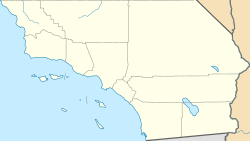| Old Fire | |
|---|---|
| Part of the 2003 California wildfires | |
 The Old Fire burning in the San Bernardino Mountains, viewed from Strawberry Peak | |
| Date(s) |
|
| Location | San Bernardino Mountains, California, U.S. |
| Coordinates | 34°12′N117°17′W / 34.20°N 117.28°W |
| Statistics [1] | |
| Burned area | 91,281 acres (369 km2) |
| Impacts | |
| Deaths | 6 |
| Structures destroyed | 975 |
| Damage | $1.2 billion (2003 USD) [2] [3] |
| Ignition | |
| Cause | Arson |
| Perpetrator(s) | Rickie Lee Fowler |
| Map | |
The Old Fire was a large complex wildfire that started on October 25, 2003, near Old Waterman Canyon Road and California State Route 18 in the San Bernardino Mountains, in San Bernardino County, Southern California, United States. The Old Fire caused at least $1.2 billion in damages. [2] [3]
Contents
- The wildfire
- Old Fire, Padua, and Grand Prix wildfires
- Cause
- Arson
- Accidental ignition
- Victims
- See also
- References
- External links
The Old Fire was one of 15 wildfires throughout Southern California that month, which became known as the "2003 Firestorm" and the "Fire Siege of 2003." [4] This included the huge Cedar Fire, what was then the second-largest fire in California's history after the Santiago Canyon Fire of 1889.


